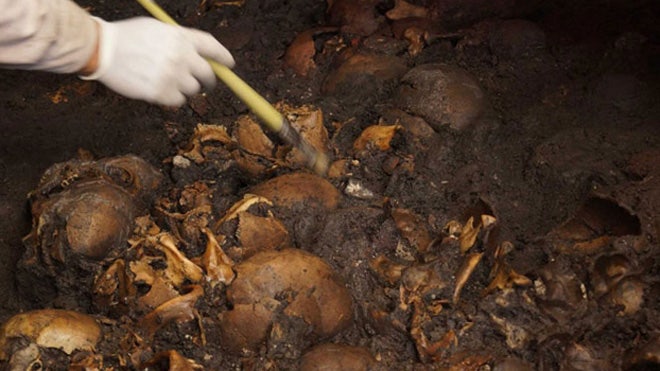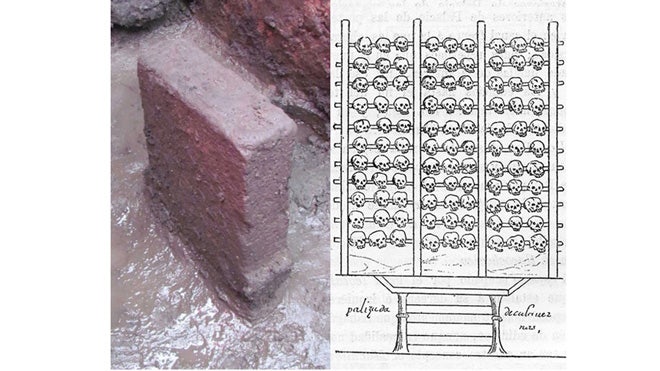Archaeologists have unearthed gruesome evidence of brutal Aztec rituals by uncovering 50 skulls and over 250 jaw bones at the Templo Mayor in Tenochtitlan (modern Mexico City).
Found at one sacrificial stone below a ceremonial platform called the "cuauhxicalco," the human remains date back more than 500 years and represent the largest number of skulls ever found in one offering.
Used in rituals associated with the worship of Mictlantecuhtli, god of death, the skulls were unearthed in different locations: 45 appeared to have just been dumped on top of the stone, while the remaining five were buried under it.
Each of the five skulls had holes on both sides, suggesting they belonged to a tzompantli. This was a skull rack on which the crania of sacrificed people were hung and displayed near temples or at other locations.
"Some of the 45 skulls found on the sacrificial stone were manipulated with the intention of preparing skull-masks that were never finished," archaeologist Raul Barrera of Mexico's National Institute of Anthropology and History (INAH) said.
According to the archaeologist, the skulls belonged to women and men between 20 and 35 years old. Some could have been dug up from other sites and reburied.
Looking like a gray headstone, the 18-inch-high, 14 to 17-inch-long and 3-inch-thick sacrificial rock revealed new ways that the Aztecs used skulls in their rituals.
Indeed, sacrificial stones were rarely associated with decapitation.
"Usually people were killed on those stones by cutting open the chest and pulling out the heart," Barrera said.
Edited By Cen Fox Post Team





































